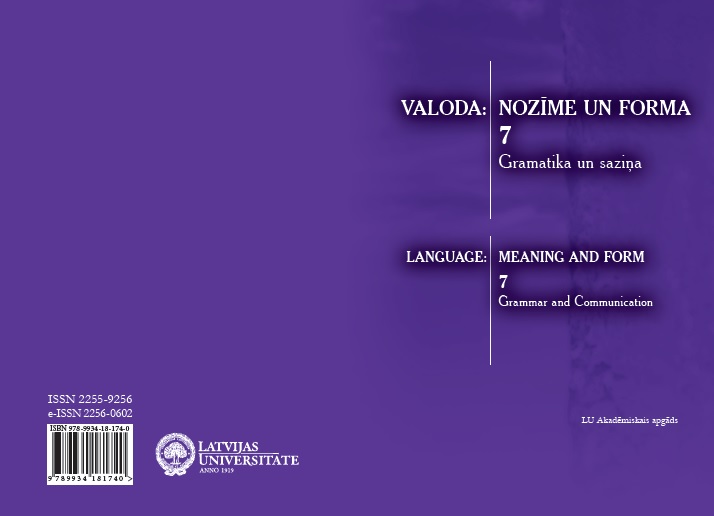Latviešu un ķīniešu valodas telpisko adpozīciju analīzes metodoloģija: tēlu shēmas un metaietvari
Methodology of Analysis of Latvian and Mandarin Chinese Spatial Adpositions: Image Schemas and Metaframes
Author(s): Marija NikolajevaSubject(s): Language and Literature Studies, Theoretical Linguistics, Applied Linguistics, Comparative Linguistics, Baltic Languages
Published by: Latvijas Universitātes Akadēmiskais apgāds
Keywords: tēlu shēmas; telpiskie elementi; ietvaru teorija; metaietvari; latviešu prievārdi; ķīniešu lokalizētāji;
Summary/Abstract: The article contains a discussion of methodological aspects of the analysis of spatial adpositions in Latvian and Mandarin Chinese based on the relationship of adjacency within the framework of cognitive linguistics. To perform an accurate and objective contrastive analysis it is advisable to combine several methods. The image schema theory offers certain tools for this kind of analysis, but those are effective when comparing phrase equivalents in two languages instead of comparing the spatial systems of two languages. To reduce the level of randomness in choosing phrases for analysis it is suggested analysing metaframes as well. Metaframes are artificially introduced structures that provide certain frames for choosing samples and increase the number of discovered patterns. The combination of findings coming from the analyses of metaframes, spatial elements and spatial schemas can improve the validity of conclusions.
Journal: Valoda: nozīme un forma
- Issue Year: 2016
- Issue No: 7
- Page Range: 127-143
- Page Count: 17
- Language: Latvian

